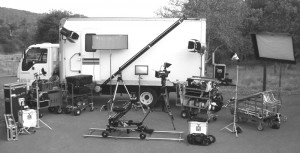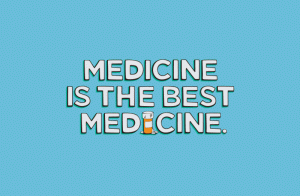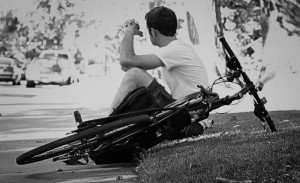I was informed by a dear friend that my last blog sounded more like a term paper than a blog post. I had to laugh, because it’s funny, sad, and true. My entire “legit” writing experience has been nothing but college essays, and so my undergraduate training must be leaking formal writing styles into current compositions. See, there I did it again — alliteration. So I’ll work on that.
But speaking of nerdy realizations, the whole topic of this blog started two nights ago on the Khan Academy.
Since I’m in the process of creating an LLC for my documentary, for reasons of fiscal and legal protection, I need to know something about business. I was a science major in college, and so corporate structure and finance is all new to me. Upon learning about balance sheets and accounting equations, I let my mind drift away into scientific parallels, when I was visited by the ghost of Albert Einstein.
“Eric… vant to know somesing cool?”
“um… ja”
I don’t have the energy to continue with cheeky dialogue, but I realized that the famous accounting equation, A=E+L, is essentially the same thing as the famous science equation, E=MC2.
Basically, accounting says that your total assets (things that are valuable or can make money) are equal to the amount of equity (money you have) plus liabilities (money you owe). Or in simpler terms, assets = money. With debt being the variable or “constant”.
In even simpler terms, the equation would be, “Potential money is the same thing as real money.” You say your lemonade stand is worth $100 because you know you can make $100 by selling lemonade. Thus, when you go to your grandpa for a $100 lemon loan, the equation is satisfied. Your lemonade stand (asset) equals your profits (equity, $0) plus your loan (liability, $100).
$100 = $0 + $100
thus
$100 = $100
When you start making money and finally pay back grandpa, the equation should still be happy. Instead of the liability being $100, the equity (money you own) is now $100, and liability = $0. So you’ve just switched around a couple of pieces, but $100 still equals $100.
Geez… and that was supposed to be the simple one. But fear not, Einstein’s ever quoted equation is not actually that difficult.
Let’s ignore the “C2 (squared)” part, because that’s simply the constant that you need for mathematical purposes. The beauty lies in the “E equals M”. Energy equals mass. Or for everyone who didn’t excel in physics (including myself), let’s say “matter” instead of mass.
Doesn’t sound all that impressive until you consider what matter and energy are, and how we think about them based on our daily experiences.
Mass/matter is stuff. It’s things. It’s objects and pieces, particles, skateboards, cats, and sewing machines.
Energy is fields. It’s waves. It’s intangible forces like microwaves, atomic radiation, gravity, and heat.
What Einstein discovered is that matter and energy, though viewed and experienced as entirely different things, are actually the same thing. It was this discovery, in fact, that led to the the invention of the atomic bomb, which Einstein was part of. You can make energy out of matter by splitting the atom, but you can also make atoms by converging energy (theoretically).
So, imagine capturing the radiation from your cell phone and turning it into a popsicle. Then imagine turning that popsicle into electricity to power the entire country of France for three years. That’s what E=MC2 is all about, and why it’s so cool.
How the deuce did I deduce a parallel between Einstein and Warren Buffett? I’ve been spending a lot of time recently watching videos about Astrophysics on YouTube. So when I switched genres to learn about economics and saw an equation with three variables (A=E+L), I immediately wondered if there was a connection to E=MC2, since I hear it so often in science.
This is just my own observation, mind you, so don’t go hatin’ if you disagree. But if you think about assets as energy (potential money / potential matter) it comes together quite nicely. You can turn an idea into profit, just like you can turn energy into matter. You can also turn profit back into an idea by poor business decisions or a bad market, the same as you can convert energy into matter (think Big Bang).
It sounds tremendously nerdy to get excited about something like that, but the reason is simple: It helps me learn.
I don’t typically go out of my way to study arbitrary information, but when I feel like it can be applied to me directly, it becomes of much greater interest. Einstein does it for me, because I love observing the physical world, and enjoying the fruits of technology; like bicycles and digitally recorded music.
Now economics is doing it for me, because I’m learning how to structure a business and raise money to fund my documentary. The more I can know about finance, the better I’ll be at handling money and ensuring the greatest level of monetary efficiency. I want investors to trust me, after all — especially at the beginning stage when businesses are seen as most risky.
I talked about my half-science, half-artist brain in the last blog. I can get the science, but I need the art to make it stick. This is why I like metaphors so much, and why I’m continually drawing seemingly obscure and random parallels. E=MC2 is more conceptually solid than A=E+L, so by tying them together, I can remember what the latter means. That’s really what it all comes down to.
Visualization is the king of learning for me, which is probably why I like Khan Academy so much. Sal Khan not only explains things in great simplicity, but he makes metaphors and literally draws examples on an electronic blackboard.
And so when it comes to the Blood Type Diet®, I realize that the concepts about lectins, glycosylation, immunology, and serum flocculation are not exactly second-nature. Peter D’Adamo does a great job of creating metaphors for mental illustration, which has helped his readers and myself “get” the concepts much easier. But one of the purposes of this documentary is to provide supplemental visual illustrations to help the lay person who’s never heard of Eat Right for Your Type better understand what’s going on.
I admit I probably won’t be using physics equations to help people understand food, because each person is familiar with different things — and most are not familiar with advanced science concepts. I also admit that I haven’t thought about what kinds of metaphors I’ll use in the documentary, because I’m still at the pre-stage of production. But what I hope to deliver is a series of “a-ha!” moments with parallels and animations that stick with the viewers. I’m researching digital artists and figuring out a budget that I can set aside for animations, as I believe this will be a key part in the documentary’s success.
Another dear friend of mine ushers me to keep the movie about people and emotions, and not about science and research. As much as it pains the science-lover in me, I realize she’s ultimately right. Scholars, academics, researchers — don’t watch too many health documentaries. If I want the message to get to them, I have to appeal to the ones who do watch these movies, who are the rest of us.
I’m a big believer in balance though, and I can see room for both the hard-science facts about the Blood Type Diet®, and the personal stories of those who are trying to live by its tenets. That’s why I’ve started an entire series called Eat Right Stories. Let’s give everyone who’s willing a chance to express their views, and appeal to the raw human emotions of moviegoers. If I can make someone laugh, cry, or ball a fist in anger, I would call it a success. But if I can do that and enlighten someone with practical knowledge they can take to their doctor, I would call it an epic success.
After all, that is the ultimate goal. If I can entertain through personal conflict and triumph, and educate through metaphors and fancy art, there’s a good chance people will walk away from the movie wanting to talk to their doctor about the Blood Type Diet®; thereby providing the fuel for AMA-satisfying statistical analysis and eventual mainstream acceptance of Peter D’Adamo’s work.
All that from E=MC squared. Next time I’ll try to leave the pocket protector at home.


